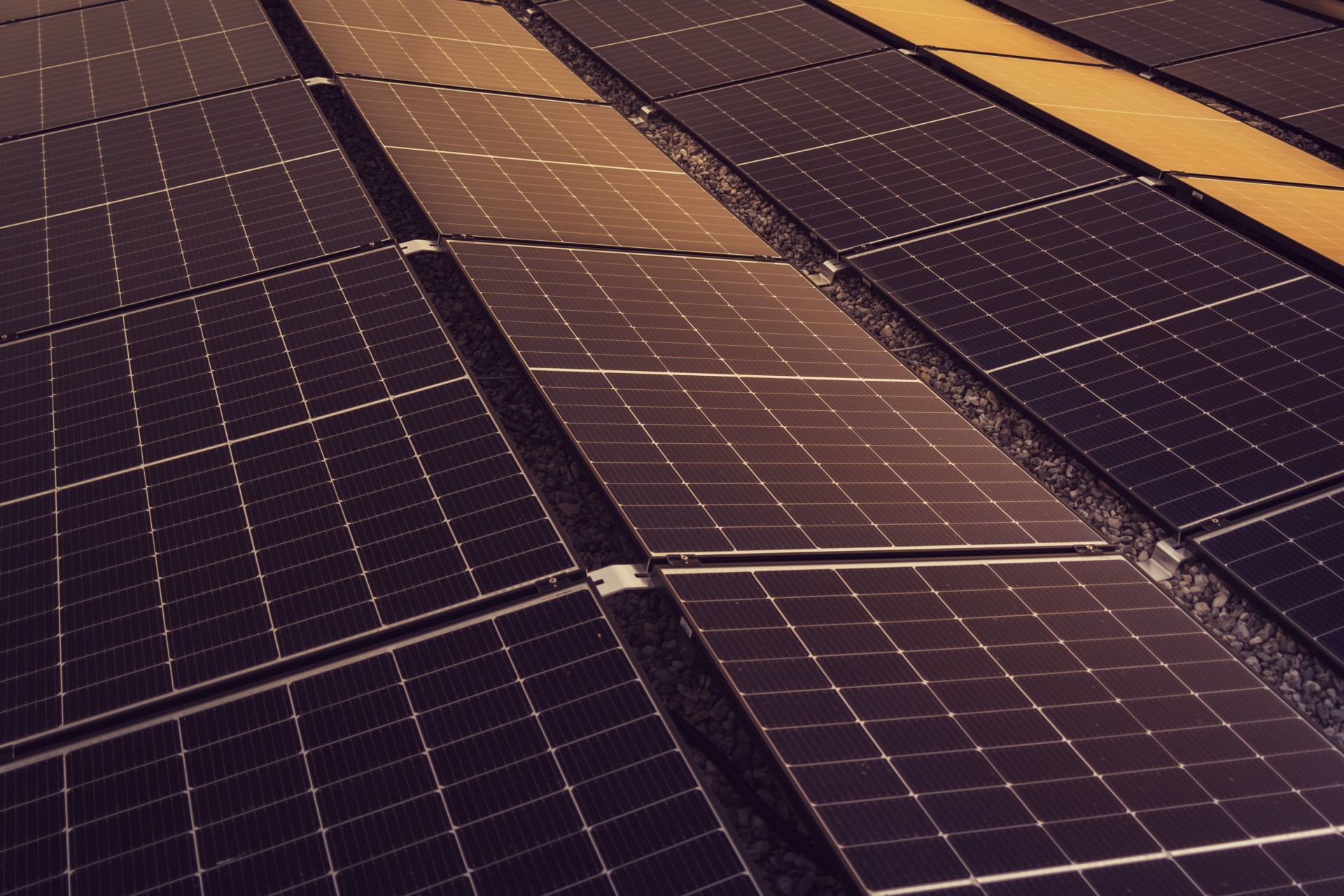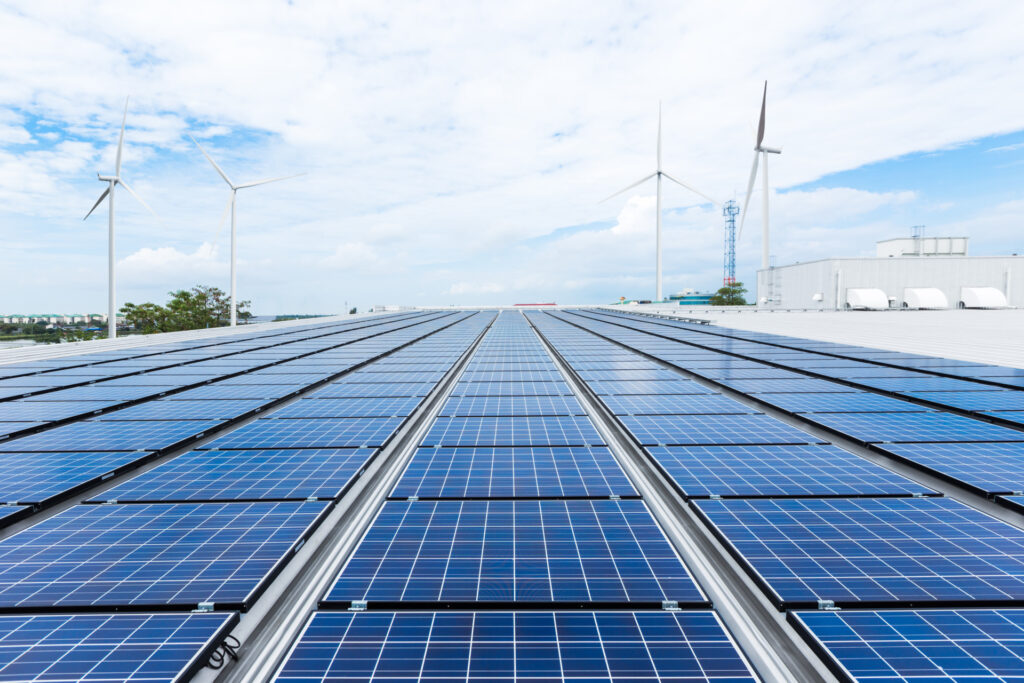An East-West Photovoltaic System Can be Worthwhile. Learn why a South-Facing System is not Always the Best Solution
It is often said that photovoltaic modules should always face south, as the sun is highest there during the day and provides us with the most energy. While this is partly true, there are also situations where an east-west photovoltaic system is the better choice. But when is this the case? What do you need to know about installing such a photovoltaic system?
What is an East-West Photovoltaic System?
Are you wondering what an east-west photovoltaic system actually is? It is a system consisting of solar modules that are oriented directly east and west. In this type of installation, half of the modules face in the opposite direction to the other half. The choice of orientation is not random. In terms of photovoltaics, it can be said with certainty that:
- modules facing south work most efficiently,
- modules facing north are least efficient, as the sun does not reach the north side at any time of the day.
What follows from the facts mentioned above? The first conclusion is that a photovoltaic system should never be oriented to the north. Moreover, orienting the system simultaneously to the south and north would essentially have the same effect as simply facing it south, so this makes no sense at all. But why is the installation of a photovoltaic system that faces both east and west sometimes carried out? You’ll find out in the following section.
East-west Photovoltaic System – Advantages
The answer to the question of why it makes sense to install an east-west photovoltaic system stems from several significant advantages of this solution. These are:
- More east-west modules fit in the same area than those facing only south. This is because a space must be maintained between successive south-facing modules. Without this spacing, the modules would shade each other. As the east-west modules face different directions, no space between them is required. This is also possible due to the lower tilt angle.
- East-west photovoltaic systems have extremely high efficiency.In Poland, such an arrangement is very favorable due to the geographical conditions. With east-facing modules, electricity generation begins at the start of the day and ends only at sunset!
- The electrical system and the grid connected to the east-west photovoltaic system are less stressed. There are no sudden peaks in electricity production; instead, electricity is produced evenly throughout most of the day.
- Most of the time, installing photovoltaic systems of this type is cheaper because it requires less time and labor.This is because more modules can be mounted on a single support structure. With the freestanding ground-mounted systems used here, it is possible to orient the modules in both directions.
- An east-west photovoltaic system is less susceptible to the negative effects of stronger winds. This helps maximize the guarantee of a minimum lifespan of 25 years or more, which is crucial for investors, for example.
Is it Worthwhile to Install a PV System with Two Orientations?
In addition to the aforementioned advantages of the east-west photovoltaic system, it must also be considered that a single module in this arrangement works less efficiently than a south-facing module. Therefore, in many cases, south orientation is more favorable – but not always. In some circumstances, the advantages mentioned above are more important than the lower efficiency of a single module. So for whom is this type of ground-mounted system recommended? The east-west photovoltaic system is praised by users in the following cases:
- Construction of a Solar Park – as it turns out, east-west photovoltaic systems are primarily used in solar parks in Western Pomerania. Incidentally, numerous of these projects were carried out by Reca Solar. When building a solar park, the main focus is on maximizing energy production. While east-west modules are less efficient, requiring a slightly higher initial investment, they generally offer a more cost-effective solution due to the ability to install more of them in a given area and the long-term reduction in grid outages;
- Companies and private owners who primarily consume electricity in the morning and afternoon – south-facing modules produce the most energy at midday. If the building is not used during this time on most days of the year, energy is wasted. In contrast, east-west photovoltaic systems enable energy generation during morning and afternoon hours;
- Users who are not willing or able to invest in their own energy storage – in the case of solar parks in Western Pomerania, investing in energy storage can be too expensive due to the high capacity of the system. For private individuals, it’s also a significant expense, and like any other device, the storage can fail. In short, it’s not an ideal solution. Moreover, the current method of settling excess energy with the power grid, net billing, means that generated energy must be repurchased at market prices. In this case, installing an east-west system seems to be the better choice; although it generates less energy overall than a south-facing system of equal capacity, it does so almost throughout the entire day.
East-West Photovoltaic Systems and Ground-Mounted and Roof Systems
East-west photovoltaic systems are very rare on pitched roofs. This requires a lot of luck, i.e., exactly the right roof structure and location that would allow for it. The situation is different with a flat roof – such projects are quite possible here. However, east-west photovoltaic systems are mainly Ground-mounted systems. Installing photovoltaic systems on open ground allows for the selection of a favorable location that guarantees access to sunlight from both sides. Furthermore, it is also possible to use suitable photovoltaic mounting systems. Most often, these are triangular or vertical models. In this case, both solutions are recommended.

